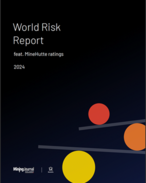This article is 4 years old. Images might not display.
The three-month LME zinc price of US$2044.50 per tonne has already recovered from its March low of $1744/t, with a further short-term rebound on the cards.
Near-term support for prices will come from a gradual recovery in demand for zinc from the steel sector as mills ramp up production.
The latest data from the World Steel Association suggests the worst of the contraction in global steel production has passed, with output having contracted by 8.7% year-on-year in May. Critically, steel production in China is set for a sharp rebound, with a 4.2% year-on-year increase recorded in May.
China accounts for about half the global demand for zinc.
While the fresh round of economic stimulus measures in China equates to about 7.5% of annual GDP, smaller than the 12.5%-of-GDP package introduced in the wake of the 2008 Global Financial Crisis, taken together with stimulus packages elsewhere they may bode well for a boost in demand for steel from key sectors such as construction and manufacturing over the remainder of 2020.
However, the economic damage inflicted by the pandemic has prompted Fitch to revise down its 2020 zinc price forecast to $2100/t, from $2250/t previously, compared with the average actual price of $2507/t in 2019.
Fitch expects the global zinc market will post a surplus of 71,000t this year, compared with a deficit of 189,000t in 2019.
Fitch also revised lower its long-term price forecast, expecting the base metal to average $2055/t through to 2024. Prices will remain on a long-term downtrend as the market surplus that emerges in 2020 persists.
Consumption growth is expected to slow from an annualised 2.2% between 2010-2019, to 1.1% from 2020-2029.
Fitch also notes risks of a second wave of infections and the re-imposition of lockdown measures "is only too real", as shown by new and large clusters in northern China in May and more recently in the EU, the USA and Brazil.
A significant second wave of global COVID-19 infections will also likely result in reduced demand from investors for pro-cyclical assets such as industrial commodities, which will place renewed downward pressure on metal prices.
























